Exploring the beauty and grandeur of U.S. National Parks is a breathtaking experience. However, amidst the splendor, there are certain hidden dangers lurking in the form of poisonous plants. While these plants may be beautiful or intriguing, they pose serious threats to your health. Being aware and informed can help you safely enjoy your adventures. Here’s a guide to 10 deadly poisonous plants you should avoid at all costs while exploring the natural wonders of U.S. National Parks.
1. Deadly Nightshade: Beauty with a Dangerous Secret
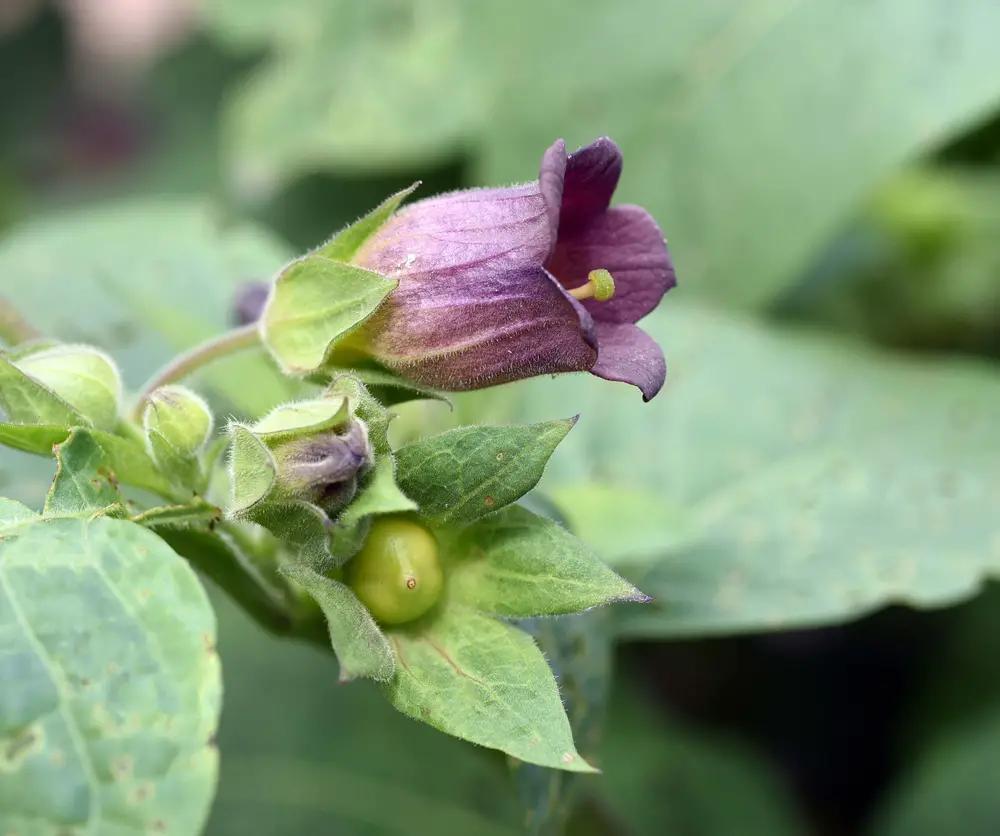
The deadly nightshade, also known as belladonna, is a plant with a sinister reputation. Its glossy berries might look tempting, but they are extremely toxic, and ingesting even a small amount can be fatal. The plant’s leaves and roots are equally dangerous, containing tropane alkaloids, which can cause hallucinations, rapid heartbeat, and even death. This is not just a tale from medieval times; these risks are very much present in today’s world. Nightshade is commonly found in wooded areas, so it’s crucial to keep an eye out while exploring.
Interestingly, belladonna has been used historically in various herbal remedies, though with great caution due to its high toxicity. It’s a reminder of nature’s dual power to heal and harm. If you spot a plant with dark, purple-black berries and bell-shaped flowers, it’s best to admire from afar and definitely not taste. Keep an eye on children and pets who might be curious about these colorful but dangerous berries. Knowledge is your best tool in staying safe from this beautiful yet poisonous plant.
2. Poison Ivy: More Than Just an Itchy Rash
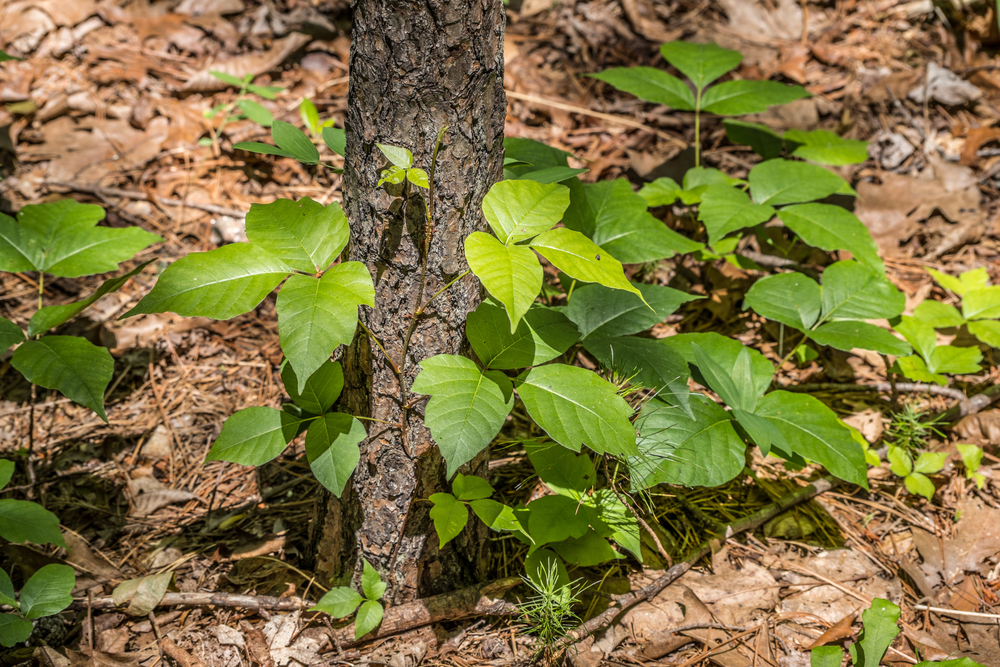
Poison ivy is notorious for causing a nasty, itchy rash that can turn any fun hike into an irritating ordeal. You might be surprised to know that this plant can appear as a small shrub or a climbing vine, making it quite adaptable and tricky to spot. The leaves are usually in groups of three, and as they say, “leaves of three, let it be.” According to the Centers for Disease Control and Prevention (CDC), contact with poison ivy can lead to a red, blistering rash, and in severe cases, it may require medical attention. So, it’s best to keep a sharp eye out for its distinctively grouped leaves during your trek.
Moreover, not only touching the plant directly can cause a rash, but its oils can also transfer from clothing, pets, or tools to your skin. Washing all exposed body parts and clothing immediately can help mitigate the risk of a rash. Remember that burning poison ivy releases toxic smoke that can severely irritate the lungs. So, it’s best to steer clear of any fires in areas where this plant grows. Nature is full of surprises, but a poison ivy rash shouldn’t be one of them on your national park adventure.
3. Water Hemlock: A Deadly Surprise in Wetlands
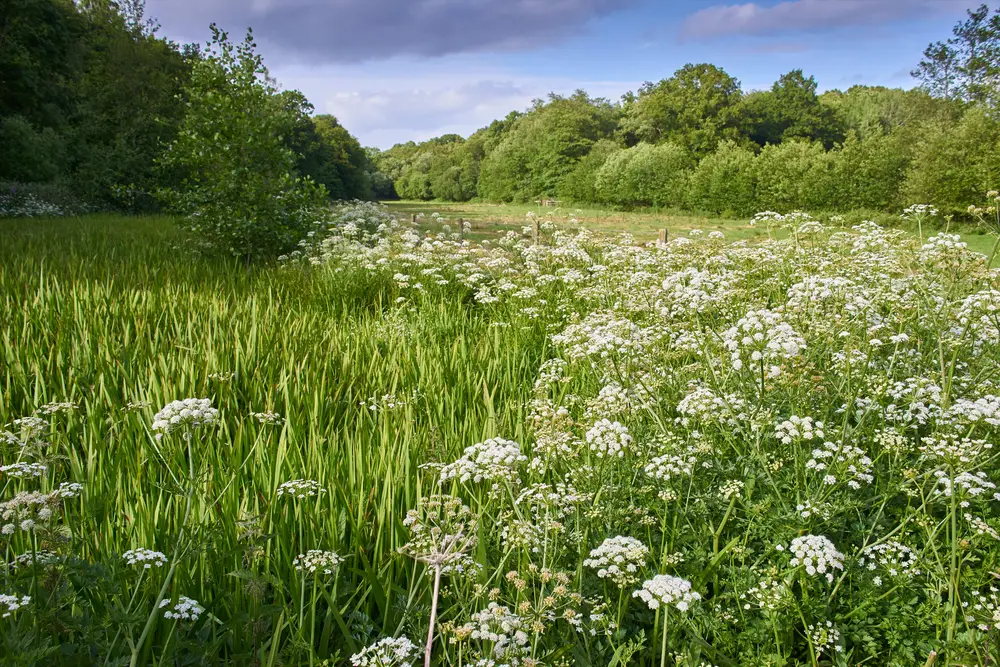
Water hemlock is considered one of North America’s most toxic plants, and it’s not something you want to stumble upon. Found near marshes, streams, and other wet environments, it might look like an ordinary, innocuous plant. However, its roots, stems, and leaves contain cicutoxin, which affects the central nervous system and can lead to seizures, respiratory failure, and death if ingested. According to the United States Department of Agriculture (USDA), animals and humans are both at risk from this deceptive plant. It’s vital to be cautious around unknown plants, especially in wetland areas.
The plant features small white flowers arranged in umbrella-like clusters, quite similar to harmless plants like Queen Anne’s lace, which makes it even more difficult to identify. If you’re picnicking or exploring near water bodies, be sure to recognize and avoid this dangerous plant. Remember, even a small mistake in identification can have serious consequences. Always educate your travel companions about the potential dangers of water hemlock to ensure everyone stays safe. A little caution goes a long way in preserving the joy of your nature outings.
4. Oleander: The Beautiful but Toxic Shrub
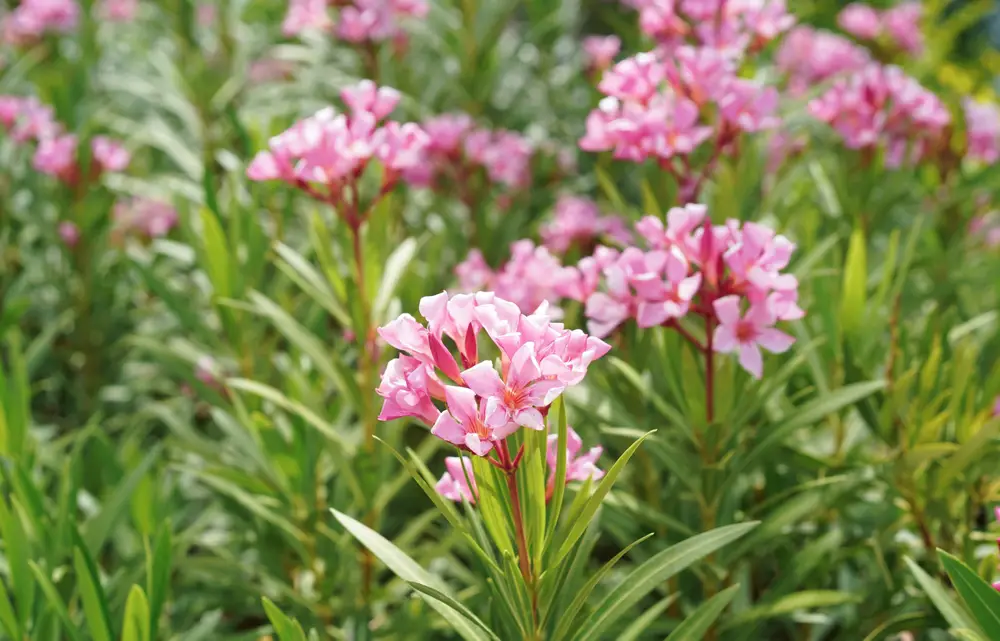
Oleander is often admired for its lush, colorful blossoms, but it’s crucial to remember that this plant is highly toxic. It’s commonly grown as a decorative plant in some parks, and its leaves, flowers, and sap contain toxic compounds. Ingesting any part of the oleander can cause severe cardiac and gastrointestinal issues. The plant is resilient and can survive in harsh conditions, making it a common sight in various regions. If you’re exploring areas where oleander is present, it’s best to appreciate its beauty from a safe distance.
Moreover, the smoke from burning oleander is also toxic, making it imperative to avoid using it as firewood. Even the dried leaves retain their toxic properties, so proper disposal and handling are crucial. Educate children about the dangers of these plants, as they are often drawn to the bright, appealing flowers. Pets, too, are at risk, so keep a close watch to ensure they don’t chew on or consume any part of the plant. Safety should always come first, especially when dealing with potentially deadly flora.
5. Foxglove: The Medicinal Plant with a Killer Side

Foxglove is a plant that holds a dual reputation for beauty and danger. Its tall spikes of tubular flowers can be quite alluring, but foxglove contains potent cardiac glycosides. These compounds can interfere with heart function and lead to serious health issues or even death if ingested. While foxglove is the source of the drug digitalis, used to treat heart conditions, the unprocessed plant is extremely hazardous. It’s a reminder of how plants can be both beneficial and risky.
When exploring areas where foxglove is abundant, avoid touching or consuming any part of the plant. Children might be tempted to pick the vibrant flowers, so it’s important to educate them about the potential dangers. Similarly, keep an eye on pets who might nibble on unfamiliar plants. Always wash your hands after handling any plant material in the wild to reduce the risk of accidental ingestion. In nature, it’s the little things that can make the biggest difference in keeping you safe and healthy.
6. White Baneberry: The Doll’s Eyes That Deceive

White baneberry, also known as “doll’s eyes,” might catch your attention with its unusual and eerie appearance. This plant features white berries with black dots, resembling creepy doll’s eyes, hence the nickname. While it might be tempting to get a closer look, any part of this plant can be toxic if ingested. The berries contain cardiogenic toxins that can cause cardiac arrest in humans. Found in shady forests, this plant is one you’ll want to admire from a distance.
These toxic berries can be appealing to young children, so it’s essential to supervise them closely when hiking through areas where white baneberry grows. The plant can cause sedation, dizziness, and even death if eaten, making it one of the more dangerous plants in the wild. It’s a classic example of nature’s warnings disguised as beauty. Always educate your hiking group about the potential dangers, so everyone knows what to avoid. It’s better to be safe than sorry when it comes to such deceptive plants.
7. Jimsonweed: Hallucinogenic but Deadly
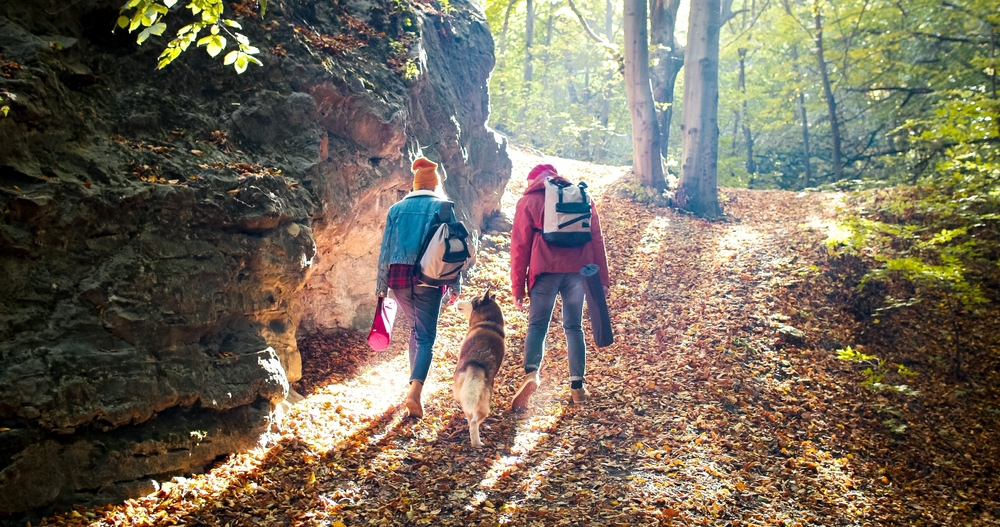
Jimsonweed, or devil’s snare, is a plant with a notorious reputation for causing hallucinations and delirium. Its toxic alkaloids can have severe, even deadly effects when consumed. Every part of the plant is toxic, but the seeds and leaves are especially potent. Jimsonweed can be found in open fields, along roadsides, and even in some neglected garden areas. It’s a plant that demands respect and distance due to its unpredictable and dangerous nature.
The plant has a distinctive appearance with spiky seed pods and trumpet-shaped flowers, making it stand out in its environment. While stories of its hallucinogenic effects might intrigue some, the risk far outweighs any potential curiosity. Consuming jimsonweed can lead to rapid heartbeat, hyperthermia, and even coma. As with all toxic plants, educating yourself and your companions about jimsonweed’s appearance and dangers is key to avoiding accidental poisoning. Nature is full of fascinating wonders, but staying safe should always be your priority.
8. Castor Bean: The Deadly Plant with a Notorious Reputation

The castor bean plant is infamous for its seeds, which contain ricin, one of the most toxic substances known to man. Just a few seeds can be fatal if ingested, causing severe abdominal pain, vomiting, and even death. Despite its danger, the plant is sometimes cultivated for ornamental purposes due to its striking foliage. It’s a stark reminder that not everything beautiful is safe. If you see a plant with large, star-shaped leaves and spiny seed pods, steer clear.
Ricin is not only dangerous in its natural form but has also been used historically as a poison. This plant embodies the dual nature of many in the botanical world: it’s the source of castor oil, a well-known laxative, but also a deadly toxin. Avoid handling the plant, especially the seeds, and educate those around you about its potential dangers. Staying informed and cautious can help you appreciate the beauty of nature without falling prey to its hidden threats. Remember, in the wild, knowledge truly is power.
9. Monkshood: Beautiful Yet Treacherous

Monkshood, also known as wolfsbane, is a plant that boasts striking purple-blue flowers but conceals a deadly secret. All parts of this plant contain aconitine, a potent toxin that can cause severe neurological and cardiac symptoms. Even handling the plant without gloves can lead to numbness and tingling. It’s often found in mountainous regions, adding a splash of color to the landscape, but it’s essential not to be fooled by its beauty. When hiking in areas where monkshood grows, admire it from a distance.
Historically, monkshood was used as a poison on arrow tips for hunting, emphasizing its lethal properties. The plant’s toxicity has made it a symbol of caution in folklore and literature. Educating yourself and others about its appearance and risks can prevent accidental contact or ingestion. Always supervise children and pets when exploring areas where this plant might be present. In the world of plants, sometimes the most beautiful are also the most dangerous, so always tread with care.
10. Angel’s Trumpet: A Fragrant but Dangerous Beauty
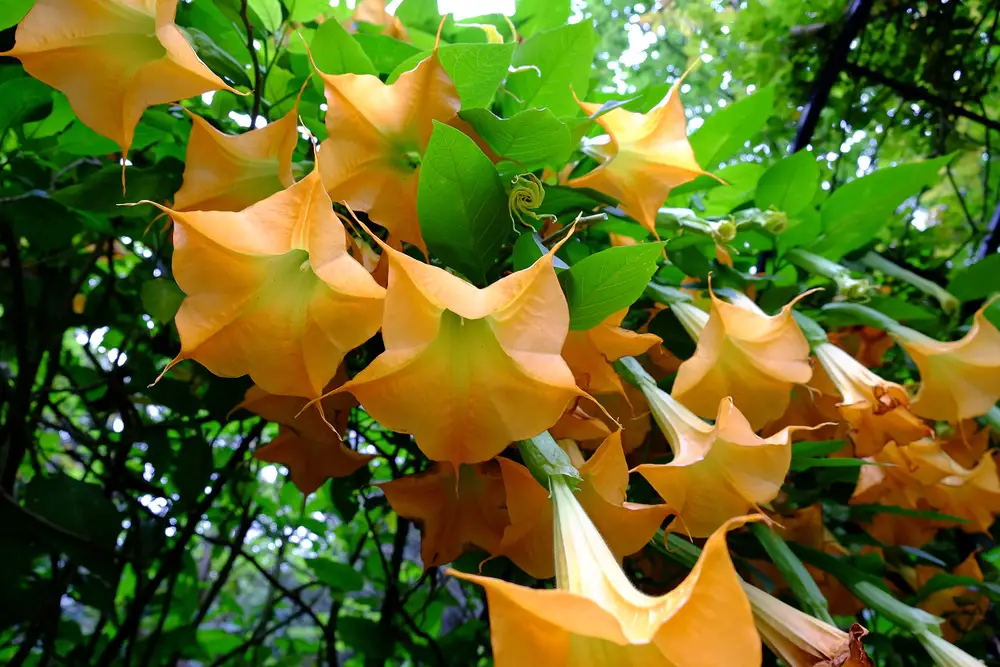
Angel’s trumpet is a plant that captivates with its large, trumpet-shaped flowers and sweet fragrance. However, every part of this plant is toxic, containing tropane alkaloids that can cause confusion, paralysis, and even death if ingested. The plant is often used in ornamental gardens, but its dangerous nature means it requires respectful distance. The flowers hang like bells, giving the plant its name, and releasing a pleasant scent, especially in the evenings.
Despite its alluring appearance, angel’s trumpet has been involved in poisoning incidents, particularly among those unaware of its risks. It’s a reminder that beauty can sometimes be deceptive, and caution is always warranted. If you’re exploring gardens or areas where this plant is present, it’s best to look and not touch. Keeping informed about the plants in your environment is crucial for safety. Always prioritize your well-being over curiosity when it comes to nature’s more dangerous creations.
